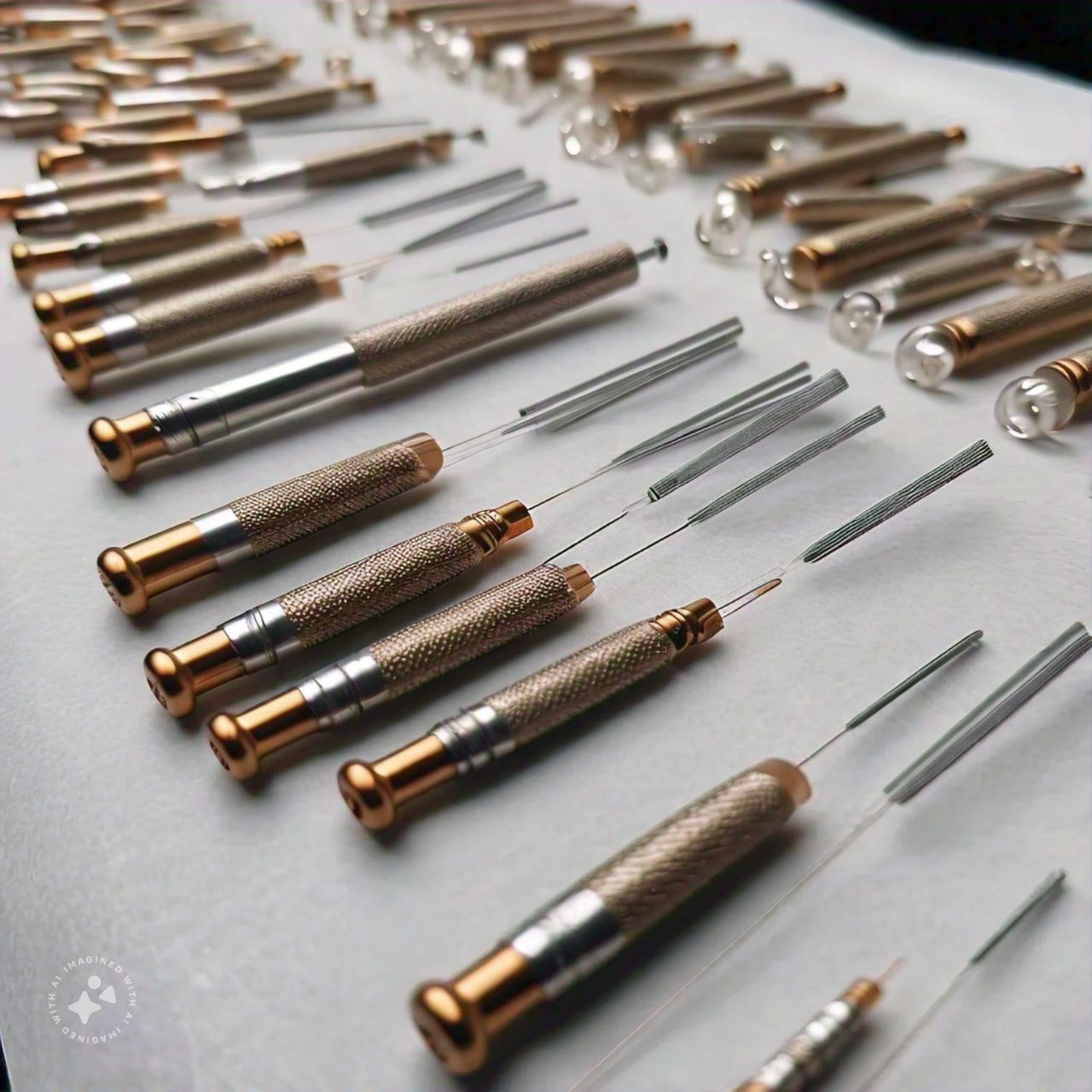Acupuncture Needles Types: A Guide to Understanding Their Variations and Uses
Acupuncture, a cornerstone of traditional Chinese medicine, has been practiced for thousands of years to promote healing and balance in the body. One of the key elements of this ancient practice is the use of acupuncture needles. These needles, though seemingly simple, come in various types designed for different purposes and techniques. Understanding the different acupuncture needles types can help both practitioners and patients appreciate the precision and versatility of this healing art.

- Filiform Needles
Filiform needles are the most common type used in acupuncture. They are thin, solid, and made of stainless steel. These needles are designed to penetrate the skin with minimal discomfort and are primarily used to stimulate acupoints along the body’s meridians. The flexibility and fine gauge of filiform needles allow for precise placement, making them ideal for general acupuncture treatments.
- Press Needles
Press needles are small, short needles designed to be left in the skin for an extended period, usually a few days. They are often used in auricular (ear) acupuncture and other micro-system acupuncture techniques. The ability to leave these needles in place allows for continuous stimulation of specific points, making them effective for conditions that require ongoing treatment.
Download the PDF Brochure at https://www.marketsandmarkets.com/pdfdownloadNew.asp?id=142751390
- Intradermal Needles
Intradermal needles are very fine and short, designed to be inserted just below the skin’s surface. They are typically used for treatments that require a subtle and sustained stimulus, such as chronic pain management or cosmetic acupuncture. Intradermal needles are less invasive than traditional needles and can be used in sensitive areas like the face.
- Three-Edged Needles
Three-edged needles, also known as triangular needles, are used for bloodletting techniques in traditional Chinese medicine. These needles are thicker and have a triangular cross-section, allowing them to create a small incision to release a few drops of blood. This type of acupuncture is used to treat conditions associated with blood stasis, such as migraines, skin conditions, or acute injuries.
- Plum Blossom Needles
Plum blossom needles, or seven-star needles, are used in a tapping technique known as plum blossom or seven-star acupuncture. This tool consists of several small needles arranged in a cluster, resembling the shape of a plum blossom. The practitioner lightly taps the needle cluster on the skin, stimulating the area without deep penetration. This method is often used for treating larger areas of the body, such as for skin conditions or promoting general wellness.
- Dermal Needles
Similar to plum blossom needles, dermal needles are used for surface-level stimulation. They are typically employed in cosmetic acupuncture to improve skin texture and tone or in treating superficial issues like scars. Dermal needles can also be used in broader areas for generalized stimulation.
- Electroacupuncture Needles
Electroacupuncture involves attaching electrodes to acupuncture needles to deliver a small electric current to the acupoints. The needles used for this technique are typically similar to filiform needles but designed to be compatible with the electrical equipment. Electroacupuncture is used to enhance the effects of traditional acupuncture, particularly in pain management and neurological conditions.
- Gold and Silver Needles
In traditional Chinese medicine, the use of gold and silver needles is believed to have specific energetic properties. Gold needles are thought to have a tonifying or warming effect, making them suitable for conditions associated with deficiency or cold. Silver needles, on the other hand, are believed to have a sedating or cooling effect, used for conditions of excess or heat. While these needles are less commonly used today, they represent a fascinating aspect of acupuncture’s history and its philosophical underpinnings.
- Japanese Needles
Japanese acupuncture needles tend to be thinner and often have a rounded tip, making them less painful than their Chinese counterparts. Japanese acupuncture emphasizes gentle techniques, and these needles reflect that approach. They are often used for patients who are sensitive or apprehensive about acupuncture.
- Korean Needles
Korean acupuncture needles are similar to Japanese needles but are often shorter. They are commonly used in Korean hand therapy, a micro-system of acupuncture that focuses on the hand as a reflection of the entire body. These needles are designed to be used in specific and precise points on the hand.
- Disposable Needles
Modern acupuncture practice typically uses disposable needles to ensure safety and hygiene. These needles come pre-sterilized and are used once before being discarded. While they can be of various types (filiform, press, etc.), their single-use nature makes them the standard in most clinical settings today.
Direct Purchase at https://www.marketsandmarkets.com/Purchase/purchase_reportNew.asp?id=142751390
The variety of acupuncture needles types reflects the depth and versatility of acupuncture as a healing practice. Each type of needle is tailored to specific techniques and therapeutic goals, allowing practitioners to customize treatments to the needs of each patient. Whether it’s the precision of filiform needles, the sustained effect of press needles, or the specialized uses of three-edged or gold needles, understanding these tools enhances the effectiveness of acupuncture in promoting health and well-being.
